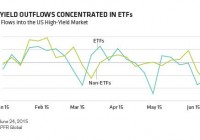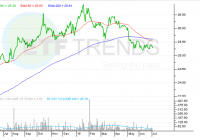Lipper Closed-End Fund Summary: June 2015
For the second consecutive month both equity and fixed income CEFs suffered negative NAV-based returns (-2.84% and -0.74% on average, respectively, for June) and market-based returns (-4.31% and -2.83%). Year to date, however, both groups just remained in positive territory, returning 0.41% and 0.91% NAV-based returns. While the Russell 2000 and the NASDAQ Composite managed to break into record territory in mid-June, advances to new highs were generally just at the margin. However, at June month-end concerns about the Greek debt drama, looming U.S. interest rate increases, Puerto Rico’s inability to service its public debt, and China’s recent market gyrations weighed heavily on investors. A positive finish for equities on the last trading day of June wasn’t enough to offset the Greek debt-inspired meltdown from the prior day, and many of the major indices witnessed their first quarterly loss in ten. Volatility was on the rise in June. At the beginning of the month rate-hike worries plagued many investors after an upbeat jobs report raised the possibility of an interest rate hike this fall. The Labor Department reported that the U.S. economy had added a better-than-expected 280,000 jobs for May, beating analysts’ expectations of 210,000. Despite a rise in the unemployment rate to 5.5% (as once-discouraged job seekers reentered the labor market), many pundits felt the Federal Reserve would be more likely to raise interest rates sooner rather than later. However, European equities showed signs of weakness, and investor handwringing began in earnest as investors contemplated the looming deadline for Greece to make its first debt payment to the IMF at the end of June. And while early in the month the Shanghai Composite rose above the 5,000 mark to its highest level since January 2008, on Friday, June 19, the Shanghai Composite posted its worst week in more than seven years as investors bailed on some recently strong-performing Chinese start-ups. Worries of high valuations and record levels of margin debt sparked the exodus. Investors’ trepidations were not easily dispelled, and by mid-month more talk about a Greek exit (“Grexit”) from the Eurozone and anxiety before the Federal Open Market Committee’s June meeting led to further selloffs in the equity markets. A combination of an impasse in the Greek debt talks along with a purported quadruple-witching day sent the Dow to a triple-digit decline on Monday, June 29, with Treasuries rallying on the news as investors looked toward safe-haven plays. For June the Dow, the S&P 500, and the NASDAQ were in the red, losing 2.17%, 2.10, and 1.64%, respectively, while a strong small-caps rally helped send the Russell 2000 up 0.59%. Nonetheless, interest concerns trumped the Greek drama, and for the month Treasury yields rose at all maturities, except the three-month. The ten-year yield rose 23 bps to 2.35% by month-end. For the third consecutive month none of the municipal bond CEFs classifications (-0.36%) witnessed plus-side returns for June. However, the municipal bond CEFs macro-classification did mitigate losses better than its domestic taxable bond CEFs (-1.12%) and world bond CEFs (-1.45%) brethren. Despite the Greek debt drama, world equity CEFs (-2.04%) mitigated losses better than their mixed-asset CEFs (-2.11%) and domestic equity CEFs (-3.41%) brethren. And Growth CEFs (+0.68%) posted the only positive return in the equity universe for the month, while Energy MLP CEFs (-8.85%) was at the bottom. For June the median discount of all CEFs widened 135 bps to 10.52%-worse than the 12-month moving average discount (8.92%). Equity CEFs’ median discount widened 90 bps to 10.74%, while fixed income CEFs’ median discount widened 162 bps to 10.44% (their largest month-end discount since October 2008). For the month only 5% of all CEFs traded at a premium to their NAV, with 7% of equity funds and 4% of fixed income funds trading in premium territory.

